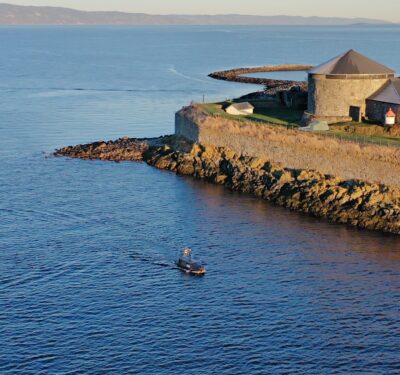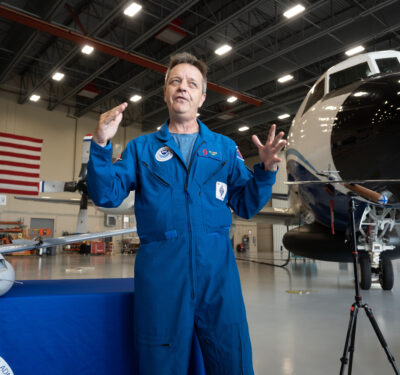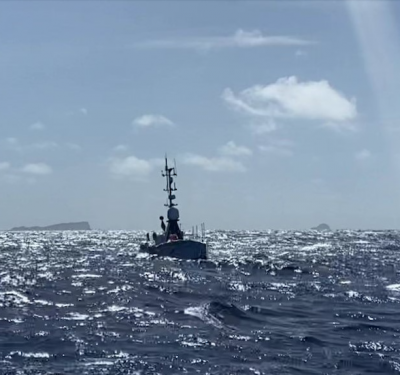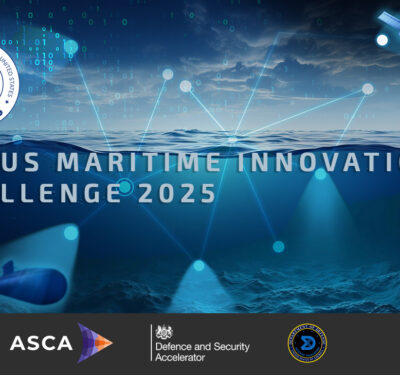 Almost a year after The Mayflower Autonomous Ship (MAS) was originally scheduled to depart on its journey from Plymouth, England, to Plymouth, Massachusetts—taking the same route as the original did in 1620—the ship finally set sail last month. A few days later, a damaged coupling on the generator’s exhaust system forced MAS to return to England before it could complete the 3,000-mile voyage.
Almost a year after The Mayflower Autonomous Ship (MAS) was originally scheduled to depart on its journey from Plymouth, England, to Plymouth, Massachusetts—taking the same route as the original did in 1620—the ship finally set sail last month. A few days later, a damaged coupling on the generator’s exhaust system forced MAS to return to England before it could complete the 3,000-mile voyage.
COVID caused the original delay, giving the team more time to complete trials before the launch. Everything was working as it should before the ship set out. In fact, all the instruments and sensors that allow the ship to safely travel autonomously performed beautifully, said Brett Phaneuf, president and managing director of Submergence Group and Marlin Submarines Ltd. (M Subs).
Phaneuf’s been part of the team behind MAS since the beginning and described the coupling damage that forced the boat to return as a common issue, and the type of problem he was afraid would pop up.
The original Mayflower ended up having to return twice for repairs, he noted, but that ship had 102 passengers on board. MAS will be the first to travel across the Atlantic without a captain or crew, hopefully completing what’s expected to be a three-week journey later this year. The research vessel uses IBM’s automation, AI and edge computing technologies to assess its environment and make decisions.
The 50-foot ship is equipped with sails, batteries, diesel, solar panels and several propulsion systems as well as redundancies with failure options. Its mission is to collect ocean data during this journey and beyond. The project is led by marine research organization ProMare, with IBM acting as both lead technology and lead scientific partner. Positioning solutions provider VERIPOS is among other partners.
The modern-day version of the original Mayflower honors the past as well as the future, commemorating that historic journey while also celebrating what ships operated autonomously could mean for the future of ocean research.
“Our ship was never really in danger,” Phaneuf said. “The sea state was easily handled, and it was still collecting data and still talking to us. We knew where it was and everything around it, so there was no emergency and no rush because there was nobody onboard. The ship could have stayed out there a week or a month while we decided what to do, but it was close enough that we could easily grab it.”
Signs of Trouble
After traveling about 400 miles, the AI-powered vessel reported a problem with maintaining speed, Phaneuf said. Because MAS was only a few days into the journey and still recoverable, the team decided to have the Mayflower turn back so they could investigate further and avoid bigger problems later in the journey. So, they asked the ship to return, and it charted a course back to Plymouth, England.
MAS traveled on its own for about a day and a half before the motor on the generator started failing, Phaneuf said. It has batteries and solar panels for power, but, because of the coupling issue, it had no generator to charge up. MAS faced bad weather on the way back, with rough currents that required more energy and overcast skies that kept it from getting a good charge.
MAS went as far as it could before transitioning into loiter mode to conserve power. A support boat was then sent to the ship’s exact location, which was provided by the VERIPOS receivers, and was able to pull MAS the rest of the way.
“When she got back, we opened her up and found the flexible coupling on the exhaust system for the generator was shredded in half,” Phaneuf said. “Millions of these things are in use; we just got unlucky.”
The Fix
The team is now sourcing components to build a new exhaust system, replace the motor on the generator and make a few other small adjustments to the ship, Phaneuf said, including possibly changing out a few cameras.
Once all the repairs and changes are made, which should happen in the next few weeks, the team will go through another set of trials to make sure everything is 100% before sending MAS back on her journey across the Atlantic. Then, the team’s biggest concern could be hurricanes. Phaneuf is hoping for another good weather window for the launch and will work closely with IBM’s The Weather Company to find it.
Tech Doing its Job
MAS was in great shape upon its return other than the coupling issue. The ship’s advanced technology—including high-precision receivers from VERIPOS®, which is part of Hexagon’s Autonomy & Positioning division, and AI Captain from IBM—worked flawlessly, Phaneuf said. With the VERIPOS equipment, the team knew exactly where the boat was at all times with centimeter-level accuracy, which was critical to getting back to home base.
“The Mayflower was reporting where traffic was around it and positioning. The support boat went to it like a dart because it knew exactly where she was,” Phaneuf said. “The coupling issue was a tough break, and it was frustrating, but we know all the hard stuff works. We’re more encouraged now than ever. We know we can do exactly what we want to do safely, so we’re excited.”






